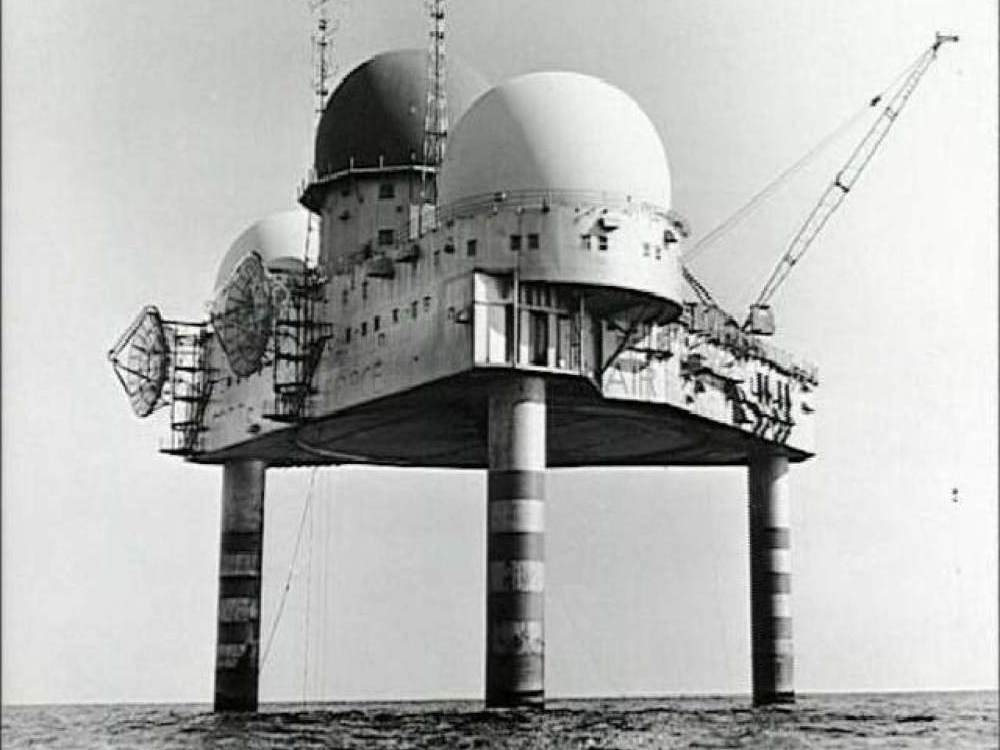The early 1970s were still a prime era for WWII nostalgia, and at that time the BBC produced one of my favourite TV series – Dad’s Army. Set in the early years of the war, it follows a Home Guard unit in the fictional coastal town of Walmington-On-Sea.

Captain Mainwaring presents his troops. From the BBC archive.
The Home Guard (originally called the Local Defence Volunteers, or LDV) were civilian units formed out of volunteers who wouldn’t otherwise be able to serve: some too young, too old, or medically unfit. As supplying equipment to the fighting troops was the primary concern in the early war, initially the LDV units had no more uniform than an armband and no weapons at all. Instead they had to improvise weapons out of what they had at hand. It was hard to say what they would actually be capable of doing: their name LDV was said to stand for “Look, duck, vanish”.
Eventually they were given uniforms and issued with rifles (albeit a mix of types), and their role was redefined from observing for German paratroopers to a more active kind of service. Now their purpose would be to harry and obstruct an invading German force (although it’s hard to see how much obstruction they would have actually presented). Once there was no threat of invasion, the Home Guard remained in service to man guard stations and free up the regular army from those duties.

Hiding from a runaway ancient Chinese rocket launcher (requisitioned from a museum). Note the armbands in lieu of uniforms, and their improvised petrol bombs. From the BBC archive.
Dad’s Army touches on many different aspects of Britain at the time, and of the Home Guard in particular. The men of Walmington-on-sea are a rag-tag lot: 70 year old Lance-corporal Jones served under General Kitchener in the Sudan, Pike is too young (a 17 year old who acts like a 12 year old), and Joe Walker was discharged from regular service due to an allergy to corned beef. They don’t have uniforms or weapons for most of the first season, parading and marching around town in work-clothes carrying fence-railings or golf-clubs in place of rifles. Later they must deal with various unwanted weapons from the army -- such as sticky bombs or a Panjandrum rocket-cart -- or inventions of their own -- using the butcher’s delivery van as an armoured personnel carrier.
This is a Britain that is still living on the past glories of the now disappearing empire, that still has a sense of “British specialness” and that Britons by nature have some special reserves of ingenuity or resolve that will overcome all obstacles. They are very class conscious even while it shows those class rules changing: middle-class Mainwaring leads the unit rather than upper-class Wilson, and having a butcher and a black-marketeer in the group keeps them in “essential supplies” when the home-office fails. And there are the petty rivalries between Mainwaring and the air-raid patrol warden Hodges, each of whom let their imagined authority go to their heads.
There have been a few games that have gone for a “weird world war” setting – Weird War, The Day After Ragnarok, and some Delta Green materials. That seems like a distraction: do we really need to make WWII more horrific? I fancy tempering it with some of the nostalgic humour of Dad’s Army. An assortment of unlikely war heroes are patrolling their town when they see something strange at the vicarage. Their calls for assistance from the regular army get no response as they had their own problems to deal with. Forced to rely on their “can do” attitude and good old British ingenuity, can they keep the world safe from this unknown threat?

Toasting “To Britain’s Home Guard” at the end of the final episode. From the BBC archive.








